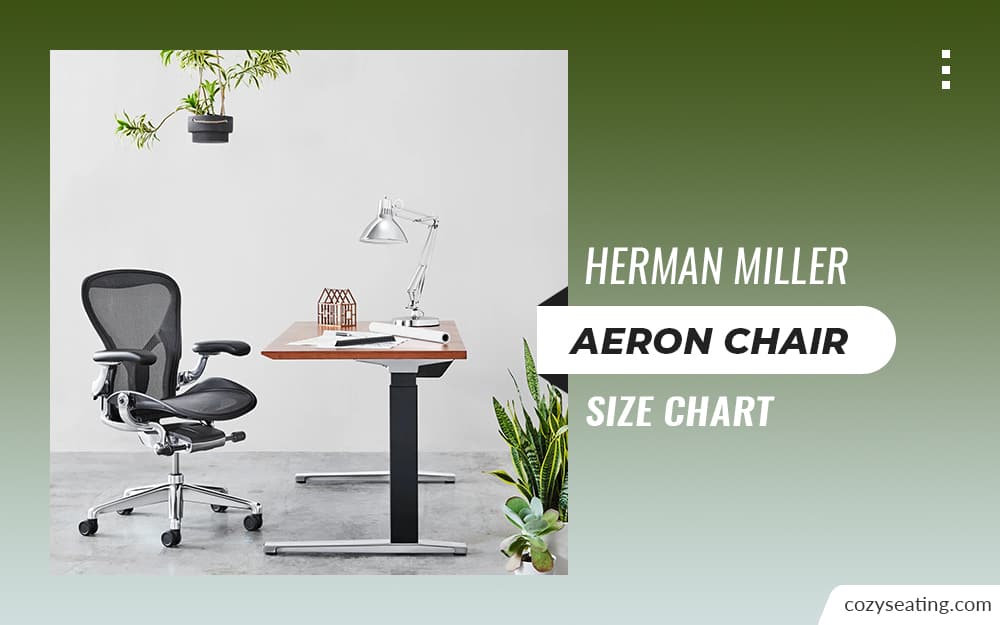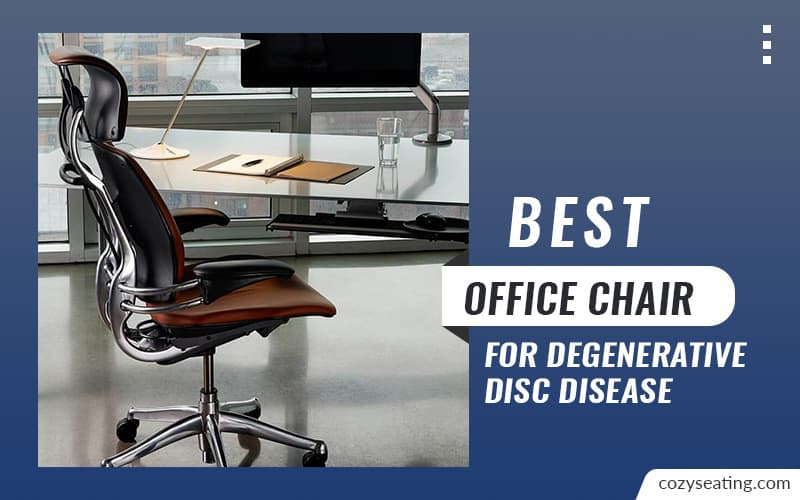
Disclosure: This site is reader-supported & contains affiliate links. We may earn a commission through products purchased using links on this page. Learn more

A leaning chair is a productivity killer and a health risk. And when something cripples your body and your pockets as well, you should tend to it ASAP.
If your office chair leans back, it won’t offer you support as you tackle most assignments. As a result, it may cause spinal cord issues, neck pains, and backaches.
Below, I elaborate on how to fix an office chair that leans back in detailed yet easy-to-follow steps.
Your office chair tilts back because of low tilt tension, faulty casters, missing screws, a faulty plate, damaged tension spring, or a rusted tilt lever. You stop your office chair from leaning back by adjusting tension, replacing defective parts, and tightening loose ones.
Table of Contents
Why Does My Office Chair Tilt Back?
A dysfunction in various chair parts can cause it to lean back. The fault may arise from your backrest, caster, or seat pad. Therefore, you need to examine your chairs’ different parts to determine the reasons for leaning back.
Moreover, a broken chair may lean back. You may need to acquire replacements to get it in fine form once more. But before you do, try adjusting a few components as you may not need to buy new parts in most cases.
Why Is My Chair Stuck Leaning Back?
Sometimes, your office chair getting stuck in a recline position is due to improperly removing the tilt lock.
As you recline and push the tilt rod, it inserts into a hole in your mechanism’s lower part. In effect, it prevents the tension spring from readjusting your chair’s position.
You can solve this by correctly using your recline rod. Lean back in your office chair until you attain maximum recline, then pull your recline rod out of the lock.
Another reason can be a rusted tilt rod that you can fix by lubricating it. Also, you may have a damaged tension spring which you should replace or high knob tilt tension, which you can reduce with your tilt knob.
How Do I Stop My Office Chair from Leaning Back?
Office chairs come in different makes and have various reasons for leaning back. Hence, there isn’t a universal way to fix all of them.
That said, there are several fixes you can use on your office chair.
Begin by sitting on your office chair to identify where the issue lies. Is your chair tilting or leaning?
Unsuitable Tilt Tension
With prolonged usage of your office chair, its tilt tension may loosen and cause your chair to lean back.
- While seated on your office chair, check how far it tilts with your entire back weight supported against the backrest.
- Grab your tilt knob on your chair’s underside while still seated.
- Turn your knob to angle the chair forward.
- Release your tilt knob once you attain your preferred maximum tilt.
Faulty Wheels
Check the wheels for any potential leaning causes. One reason might be a broken wheel. Another probable cause is your wheels being uneven.
When it comes to wheels, the chair usually leans towards the side of the deformed or broken wheel. So, if your chair is leaning back, the issue could be your rear casters.
Confirm how your chair stands. Do all the casters touch the ground when you position your seat upright?
If your floor is uneven, not all your casters can touch the floor, and the reason for your leaning is the bent surface.
Next, turn your chair so that your casters are in the air. Look at the wheels for any damage that may affect your seat’s height.
Your casters may break as a result of manufacturing defects, unequal load distribution, and being old.
Replacing Faulty Casters
Replace your current casters with new ones if you find both or one of the hind wheels is the issue. It’s not easy to get a single wheel to replace the damaged ones, so getting the whole set is reasonable.
You can get replacement wheels from your chair’s manufacturer by giving them your office chair’s model number.
Replacing your current casters with a matching pair allows you to replace only the broken caster and keep the rest for the next time you need to replace a damaged wheel.
Nevertheless, you can also opt for better casters in case you find your current set is flimsy. Ensure you check for compatibility and whether the new casters have a suitable height to keep your legs comfortable.
Removing the Damaged Casters
Typically, manufacturers secure casters on chair bases by snugly fitting them into the wheel sockets.
Grab a wheel and place your other hand on the chair base. Push the chair base away while pulling the wheel in your direction. Often, the wheel comes off at this point.
If unable to pull out the wheels using your hands, use a flathead screwdriver.
- Jam your flathead screwdriver’s blade at the joint between your chair’s base and the caster.
- Lower and raise the screwdriver, handling it like a lever.
- Try pulling it out with your hands after getting about a centimeter of your wheel’s steam out of the base.
While uncommon, some casters connect to office chair bases with screws. So, use your screwdriver to unfasten the wheels in such cases.
Here is a guide on how to remove caster wheels from office chair. Read to learn more.
Lubricate the Caster sockets
Before inserting the new wheels into your chair’s base, squirt a small amount of WD40 into the wheel sockets. Lubricating is essential as casters are less challenging to pop out than insert into their sockets.
You can also use a little petroleum jelly on your wheels’ stems if you lack WD40.
Inserting the Wheel
Position the stem of a wheel in front of a socket and push it into it. At times, the caster pops right in.
Gently knock the wheel into position, using a rubber mallet, if it fails to wholly get into the socket with a hand push.
Knock the wheel on a platform underneath the stem rather than its underside if your wheel includes this provision. This way, you reduce the risk of deforming the new caster and going back to square one.
Checking
Flip your office chair over and sit on it. Check whether it’s leaning back. If so, the leaning issue is likely more than tied to your casters.
Missing Screws
Most office chairs have a heavy-duty design which may result in a few screws unfastening as you continue using the chair. Missing screws may also result in your chair leaning back.
Typically, the screws that pop out of the office chair are miniature-sized.
If you discover missing screws, examine the area close to your office chair to determine if they are still there. But if you can’t find them, get new screws.
Confirm your chair’s screws sizes before purchasing replacements to ensure they fit your chair.
Most chairs are usually symmetrical. So, you can determine the missing screw’s size by unfastening the screw in an identical location and heading with it to the store to find a replacement.
Seat Plate Inspection
All hydraulic office chairs feature a black plate. Some of the components on these plates include hydraulic levers, bolts, screws, and adjustment levers.
Confirm that all bolts and screws on this plate are adequately tight and available. If not, fasten the loose ones with your screwdriver and get replacements for the lost ones.
Damaged Seat Plate
Besides some missing components, a damaged black plate may result in your chair leaning back. A faulty seat plate may not adjust accordingly, resulting in backward tilting.
So, how do you fix a damaged plate?
Usually, you can’t repair a damaged seat plate. Therefore, you have to get a replacement, which you can easily access from your chair’s manufacturer by giving them the model number.
Replacing your seat plate doesn’t require some expertise. So, if you like DIY projects, it shouldn’t be too hard to attach them.
Frequently Asked Questions
What Is Tilt Lock in a Chair?
A tilt-lock in a chair is a component that prevents the chair from leaning when in the upright position.
It ensures that you sit in a suitable posture while typing or writing. Simultaneously, the tilt lock allows you to recline while relaxing, attending a meeting, reading, and so forth.
Most office chairs have their tilt locks using the same controls as the pneumatic system. You engage the lock by pushing the control about a quarter-inch towards the stem.
Are Office Chairs Supposed to Lean Back?
Office chairs are supposed to lean back or stay upright to ensure that you are comfortable. In fact, you should never sit while hunched forward.
Leaning gives your back optimal support preventing strain on your neck and back muscles. And this reduces the chances of your body aching after sitting for many hours.
However, your office chair’s back should not lean while doing an intensive task like typing or writing. In such cases, ensure your backrest is upright for optimal support.
Wrap Up
Although your office chair may tilt back due to various reasons, low tension is the most likely culprit. But even with other causes, you should be able to get your chair in a suitable posture by trying the above fixes.
Recommended Reading

Herman Miller Aeron Chair Size Chart
Aeron chairs fit various people based on their weight and height. Click here to see the Herman Miller Aeron chair size chart to know if to buy size, A, B, or C.

10 Best Office Chair for Sciatica to Sit Comfortably
Let's take a look at a short list of the office chairs we've considered as the best office chair for sciatica pain. I guarantee you quality, style, and, most importantly, comfort!

Steelcase Gesture vs Herman Miller Embody
Steelcase Gesture vs Herman Miller Embody: what should you get? Check out this detailed comparison to quickly identify your winner.

10 Best Office Chair For Degenerative Disc Disease
Discover the best office chair for degenerative disc disease that helps elevate your productivity and posture. Find out the best chair for your unique needs.
